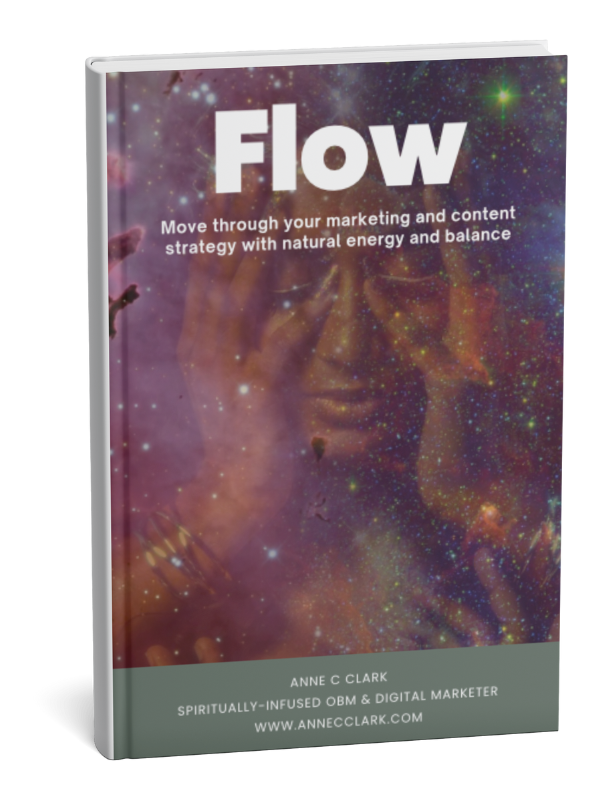
by Anne Clark | May 14, 2025 | Business
A No-Nonsense Guide for Mailchimp Users Who Want to Land in the Inbox — Not the Junk Folder
You spend time crafting the perfect email in Mailchimp, hit send, and then… crickets.
No opens. No clicks. No love.
Before you start questioning your entire life and business, check your spam folder. Chances are, that’s where your masterpiece is hiding.
Here’s why it happens — and how to fix it.
The Top Reasons Your Emails Are Going to Spam
1. Your Subject Line Screams “I’m Spam!”
Too many exclamation marks, all caps, or spammy phrases like “Free!!!” or “Buy now” will trigger filters.
✅ Keep it clean, clever, and curiosity-driven.
2. You’re Using a Dodgy “From” Email Address
If you’re still sending from a Gmail, Hotmail or Yahoo address — stop.
✅ Use a domain-based email (like you@yourbusiness.com) and verify it in Mailchimp under Domains.
3. Your Audience Didn’t Consent (or Forgot They Did)
If your list is full of cold contacts, bought emails, or people who’ve forgotten who you are, you’ll get marked as spam real fast.
✅ Only email people who explicitly opted in, and remind them who you are in your welcome emails.
4. Your Email Content is a Hot Mess
Too many images, not enough text, missing an unsubscribe link, or broken code? That’s a spam filter’s dream buffet.
✅ Keep a balance of images and text, always include your footer with your physical address and unsubscribe link, and test before you send.
5. Poor List Hygiene
Old, disengaged subscribers who haven’t opened your emails in months? They’re dragging down your sender reputation.
✅ Regularly clean your list. Use Mailchimp’s engagement tagging to remove or re-engage cold contacts.
6. You’re on a Shared IP That’s Been Naughty
Mailchimp sends from shared IPs. If another user spams hard, you can be affected.
✅ Maintain a high-quality list and send regularly — Mailchimp gives better sending reputations to active, clean users.
Quick Fixes to Keep You Out of Spam
✅ Authenticate Your Domain (SPF, DKIM, DMARC)
Sounds techy, but Mailchimp walks you through it under Website > Domains. This step tells inboxes: “Yes, I’m legit.”
✅ Use Mailchimp’s Inbox Preview & Spam Checker
Preview your email across devices and check for red flags before hitting send.
✅ Create a Welcome Sequence
Warm up your audience with automation. A friendly intro and some value-driven emails make it less likely they’ll mark you as spam later.
✅ Send Consistently
Ghosting your list for months and then suddenly showing up like “Hey bestie!” is a recipe for spam.
Be consistent. Weekly or fortnightly emails keep your domain warm and trustworthy.
✅ Ask Subscribers to Whitelist You
In your welcome email, teach subscribers how to add you to their address book or drag your email to the Primary tab (hello, Gmail users).
Treat Your Email List Like a VIP Lounge
Don’t invite randoms. Don’t scream at your guests. Don’t disappear for months and show up desperate.
Respect the inbox, and it’ll respect you back.
Bonus Tip:
Want to make sure your emails always get seen?
Use Mailchimp’s “Resend to Non-Openers” feature with a NEW subject line. But don’t overdo it. Once is enough — otherwise, you become the spam.

by Anne Clark | Apr 23, 2025 | Business, How To, LinkedIn
1. Sign Up or Log In
Go to www.linkedin.com.
Click Join now and enter your email address and password.
Follow the prompts to add your first and last name.
2. Add a Professional Profile Photo
Choose a clear, high-resolution headshot.
Smile, dress appropriately for your industry, and make sure your face takes up around 60% of the frame.
No pets, party hats, or sunglasses, unless you’re applying to be a rockstar.
3. Write a Compelling Headline
This appears right under your name and is your mini-billboard.
Don’t just use your job title. Use a value-based headline like:
Helping female-led brands build magnetic digital strategies | Digital Marketer | OBM | Podcast Pro
4. Fill Out the “About” Section
This is your personal elevator pitch. Write in the first person.
Mention:
- What you do
- Who you help
- Your mission or values
- A sprinkle of personality
Example:
I’m a spiritual OBM helping female entrepreneurs ditch the tech overwhelm and show up online with soul-aligned strategy. From email marketing to course launches, I turn chaos into clarity.
5. Add Your Work Experience
List your past and current roles, ideally with descriptions.
Use bullet points to highlight achievements, not just tasks.
Include results where possible (e.g., “Grew client’s list by 5K in 3 months”).
6. Add Skills
Choose key skills that match your niche (LinkedIn allows up to 50).
Prioritise the top 3 that reflect how you want to be known.
7. Ask for Recommendations
Reach out to past clients, managers, or colleagues for testimonials.
A good rec = social proof that sells without you saying a word.
8. Add Education & Certifications
Include schools, courses, certifications, and anything relevant to your career story.
Short courses (Mailchimp Academy, Online Marketing, VA Bootcamp)? Include them!
9. Customise Your URL
Go to “Edit public profile & URL” on the right-hand side.
Change your LinkedIn URL to something clean and easy like:
linkedin.com/in/yourname
10. Turn on “Open to Work” or “Open to Opportunities”
If you’re looking for clients or roles, enable this setting.
You can choose to show it to recruiters only or publicly.
11. Add Featured Content
Highlight your best work: PDFs, links, videos, blogs, testimonials, freebies.
This section is PRIME real estate—use it wisely!
12. Follow Relevant People & Companies
Build your network by connecting with peers, thought leaders, and potential clients.
Leave genuine comments on others’ posts to start showing up as a pro in your space.
13. Start Posting
Share a mix of:
-
Tips and value-based posts
-
Personal stories with lessons
-
Behind-the-scenes of your biz
-
Client wins and results
Tips:
-
Post at least 1-2 times per week to stay visible.
-
Keep your profile updated as your business or job changes.
-
Use a branded banner image at the top of your profile.

by Anne Clark | Apr 22, 2025 | Business
Facebook is Removing Videos from Groups: Here’s How to Save Yours Before They’re Gone
Heard the rumour? Facebook is clearing out videos from Facebook Groups, and if you’ve uploaded content over the years—training videos, lives, memories, or milestone moments—they might disappear. Poof. Gone.
But don’t stress. You don’t need to lose all your valuable content. With a few clicks (and a handy Chrome extension), you can download your videos and keep them safely stored.
Here’s how to save your Facebook Group videos before they vanish into the digital abyss.
Why Is Facebook Removing Group Videos?
Meta (Facebook’s parent company) has been gradually scaling back certain video features in Groups. They’re shifting focus toward Reels, Stories, and monetised video content – which means older video formats in private and public Groups are potentially getting the boot.
Translation? If you don’t download your videos now, you may not be able to access them again.
The Easiest Way to Download Facebook Group Videos (Using Chrome)
To download your videos easily, we recommend using a free Chrome browser extension called “Video Downloader for Facebook”. It’s quick, simple, and doesn’t require a tech degree.
Step-by-Step Guide
✅ Step 1: Use Google Chrome
This only works in Chrome—so if you’re a Safari or Firefox fan, it’s time to switch browsers (just temporarily, promise).
✅ Step 2: Add the Extension
- Head to the Chrome Web Store.
- Search for Video Downloader for Facebook™ by FDown.
- Click “Add to Chrome” and install the extension.
- Once added, you’ll see a little arrow icon in the top right of your browser bar.
✅ Step 3: Go to Your Facebook Group Video
- Navigate to the video you want to save inside your Facebook Group.
- Play the video.
- The arrow icon (the extension) should light up or show a download option.
✅ Step 4: Click to Download
- Click the Video Downloader for Facebook icon.
- Choose the video quality you want (usually “HD” or “SD”).
- Click Download.
- Your video will save directly to your computer.
✅ Step 5: Repeat for Any Other Videos You Want to Save
Rinse and repeat. If you’ve got loads, make a checklist and knock them over with a coffee in hand.
Tip: Organise Your Downloads
Create a folder on your desktop or Google Drive called “Facebook Video Archive” so you can keep everything sorted – especially if you plan to repurpose your content for other platforms (hello Instagram, YouTube, or your next course launch).
For my clients, I have been saving them by their business initials, giving it a number and then the title. eg: ACC 001 – How to Download your Facebook video – it will make it easier for me to set up a directory for them for quick reference.
Don’t Lose Your Content – Future-Proof It
Whether it’s client training sessions, member updates, or your latest “lives with heart” video series—don’t let Facebook’s clean-up sweep away your hard work. Take ten minutes today to download and store your best bits.
Because if not now… when?
Need help turning those videos into valuable evergreen content for your brand? I’ve got you. Let’s chat about how to repurpose, repackage and re-share your brilliance.

by Anne Clark | Mar 25, 2025 | Business, Digital Marketing
You’ve poured your heart into your business. You’ve posted regularly, updated your website, maybe even started an email list. But despite all the effort, you’re still not getting the visibility you hoped for.
Sound familiar?
You’re not alone. Many incredible business owners are doing all the things but still feeling unseen. The good news is—visibility isn’t about doing more. It’s about doing the right things, with the right intention and clarity.
Let’s dive into five common reasons your business isn’t getting noticed—and what you can do to change that.
1. You’re Blending In, Not Standing Out
If your brand looks and sounds like everyone else’s, it’s easy to get lost in the noise. Many business owners unintentionally dilute their uniqueness by trying to sound “professional” or follow what’s trending.
But your point of difference is you. Your story, values, and voice are what set your brand apart.
What to do:
-
Identify what makes your approach or business different.
-
Infuse personality into your marketing.
-
Focus less on trends and more on what feels aligned to you and your audience.
FLOW - Align Your Business with the Universe in 2025
Discover how to create soulful, aligned content and marketing strategies using the power of astrology, lunar cycles, and cosmic energy.
You’ve poured your heart into your business. You’ve posted regularly, updated your website, maybe even started an email list. But despite all the effort, you’re still not getting the visibility you hoped for.
Sound familiar?
You’re not alone. Many incredible business owners are doing all the things but still feeling unseen. The good news is—visibility isn’t about doing more. It’s about doing the right things, with the right intention and clarity.
Let’s dive into five common reasons your business isn’t getting noticed—and what you can do to change that.
1. You’re Blending In, Not Standing Out
If your brand looks and sounds like everyone else’s, it’s easy to get lost in the noise. Many business owners unintentionally dilute their uniqueness by trying to sound “professional” or follow what’s trending.
But your point of difference is you. Your story, values, and voice are what set your brand apart.
What to do:
-
Identify what makes your approach or business different.
-
Infuse personality into your marketing.
-
Focus less on trends and more on what feels aligned to you and your audience.
FLOW - Align Your Business with the Universe in 2025
Discover how to create soulful, aligned content and marketing strategies using the power of astrology, lunar cycles, and cosmic energy.

by Anne Clark | Feb 12, 2025 | Business, Social Media
The Best Times to Post on Social Media in 2025 (Instagram, Facebook, LinkedIn & TikTok)
Staying ahead in social media marketing means knowing when to post and what type of content resonates with your audience. As platforms continue to evolve, so do the algorithms that determine visibility and engagement. Here’s your 2025 guide to the best posting times for Instagram, Facebook, LinkedIn, and TikTok—plus insights into the trending content formats that are making waves.
Best Times to Post on Social Media in 2025
Instagram
With Instagram’s focus on Reels, carousel posts, and Stories, timing is everything.
- Best Times:Weekdays: 7 AM – 9 AM (morning scroll)Lunchtime: 12 PM – 1 PM (break-time browsing)Evenings: 6 PM – 9 PM (after-work relaxation)
- Best Days: Tuesday, Wednesday, and Thursday
- Worst Day: Sunday
Facebook
Facebook’s organic reach has declined, but engagement remains strong for well-timed posts.
- Best Times:Weekdays: 7 AM – 9 AM (before work)Midday: 11 AM – 1 PM (lunch breaks)Evening: 6 PM – 8 PM (post-work unwinding)
- Best Days: Tuesday, Wednesday, and Friday
- Worst Day: Saturday
LinkedIn
Since LinkedIn is a professional platform, work hours matter.
- Best Times:Early Morning: 7 AM – 9 AM (before the workday starts)Midday: 12 PM – 1 PM (lunch break browsing)Evenings: 5 PM – 7 PM (after work wind-down)
- Best Days: Tuesday and Wednesday
- Worst Day: Saturday
TikTok
TikTok’s algorithm prioritises content engagement, and posting at peak times helps visibility.
- Best Times:Early Mornings: 6 AM – 9 AMAfternoons: 12 PM – 3 PMLate Nights: 7 PM – 11 PM
- Best Days: Monday, Wednesday, and Friday
- Worst Day: Sunday
Trending Social Media Content in 2025
Staying relevant in 2025 requires not just perfect timing but also the right content. Here are the top social media trends you should leverage:
1. Short-Form Video (Reels & TikToks)
- Why? Short-form videos are still the most engaging content format.
- How? Use engaging hooks, trending sounds, and storytelling.
2. AI-Generated & Interactive Content
- Why? AI tools allow for unique, customisable content.
- How? Try AI-generated captions, interactive polls, and chatbot-led engagements.
3. Carousel & Infographic Posts (Instagram & LinkedIn)
- Why? Multi-slide posts encourage engagement and saves.
- How? Provide step-by-step guides, checklists, or insightful data.
4. Behind-the-Scenes & Authentic Storytelling
- Why? Audiences want real, unpolished content.
- How? Share your workday, struggles, and wins.
5. User-Generated Content & Community Engagement
- Why? Authenticity drives brand trust.
- How? Feature testimonials, audience challenges, and reshared content.
6. LinkedIn Thought Leadership & Personal Branding
- Why? Authentic professional insights drive engagement.
- How? Share industry trends, personal stories, and professional milestones.
7. Live Content & Interactive Q&As
- Why? Live engagement boosts visibility and connection.
- How? Host weekly AMAs, product demos, or casual chats.
Social media success in 2025 is about more than just great content—it’s about posting at the right time and leveraging trending formats to maximise engagement. By following this guide, you’ll stay ahead of the curve and ensure your content gets the attention it deserves.

by Anne Clark | Feb 3, 2025 | Business, Spirituality
February 2025 is filled with significant spiritual and cultural events that offer unique opportunities for me to connect with diverse audiences, foster community engagement, and create meaningful marketing campaigns. By aligning my business strategies with these observances, I can demonstrate inclusivity, enhance brand awareness, and cultivate stronger relationships with customers.
Below, I explore the key spiritual events in February 2025 and actionable ways I can tap into them.
1. Chinese New Year – Year of the Wood Snake
Date: January 29, 2025 (Celebrations continue into February)
Significance:
Chinese New Year is one of the most celebrated cultural festivals worldwide. The year 2025 marks the Year of the Wood Snake, symbolizing wisdom, transformation, and strategic planning—an ideal theme for business growth.
How I Can Leverage This:
- Cultural Engagement: Host or sponsor local Chinese New Year celebrations in my community.
- Themed Promotions: Offer discounts or limited-edition products aligned with the Year of the Wood Snake.
- Social Media Campaigns: Share themed content, including zodiac predictions and customer engagement posts.
- Gift Bundles: Create Lunar New Year gift sets, especially if I run an e-commerce or wellness business.
2. Maha Shivaratri – A Night of Spiritual Awakening
Date: February 26, 2025
Significance:
Maha Shivaratri is a Hindu festival dedicated to Lord Shiva, focusing on meditation, self-reflection, and overcoming darkness. It’s a time when spiritual seekers engage in night-long prayers, fasting, and rituals.
How I Can Leverage This:
- Wellness and Mindfulness Initiatives: Offer yoga, meditation, or fasting guides for those observing the festival.
- Holistic Health Promotions: If I run a wellness business, provide discounts on detox programs, herbal products, or Ayurvedic treatments.
- Community Support: Partner with local Hindu organizations or charities for Maha Shivaratri events.
3. Full Moon in Leo – Manifestation and Leadership Energy
Date: February 12, 2025
Significance:
The full moon in Leo is known for amplifying creativity, self-expression, and leadership qualities—an excellent time for me to set new goals and enhance personal branding.
How I Can Leverage This:
- Leadership Workshops: Host a business webinar or mastermind session focused on confidence and visibility.
- Personal Branding Push: I can launch new offerings, personal blogs, or LinkedIn content around self-expression and leadership.
- Full Moon Rituals: Wellness brands can introduce manifestation kits or guided moon rituals.
4. Parinirvana (Nirvana Day) – A Time for Reflection
Date: February 15, 2025
Significance:
Parinirvana Day, also known as Nirvana Day, commemorates the death of Buddha and his transition into Nirvana. This Buddhist observance is a time for deep reflection, peace, and mindfulness.
How I Can Leverage This:
- Corporate Wellness Programs: Promote mental health and mindfulness within workplaces.
- Content Marketing: Share blog posts or social media content about the benefits of mindfulness and simplicity in business.
- Philanthropy: Consider donating a percentage of sales to a meditation or wellness charity.
5. Astrological Transits – Venus Conjunct Neptune in Pisces
Date: February 17, 2025
Significance:
This transit brings heightened intuition, creativity, and spiritual connection—perfect for businesses in the creative, wellness, or coaching sectors.
How I Can Leverage This:
- Creativity Boost: Run workshops on intuitive business strategies, content creation, or brand storytelling.
- Spiritual Branding: Integrate astrology into marketing by aligning products or services with cosmic energies.
- Collaborations: Partner with astrologers or spiritual influencers to offer special readings or events.
6. Start of Coptic Orthodox Great Lent
Date: February 24, 2025
Significance:
The Coptic Orthodox Great Lent is a period of fasting, prayer, and spiritual renewal.
How I Can Leverage This:
- Nutritional Guidance: Offer plant-based or fasting-friendly meal plans for those observing Lent.
- Mindful Living Content: Share resources on spiritual renewal and intentional living.
- Community Support: Show respect and recognition for observant customers by acknowledging the significance of Lent in branding and communication.
February 2025 presents a powerful month for spiritual growth and business alignment. I can use these spiritual and cultural observances to foster meaningful engagement, build community, and tap into the themes of transformation, reflection, and leadership.
By thoughtfully integrating these themes into my business strategies—whether through promotions, collaborations, or content marketing—I can establish a stronger emotional connection with my audience while fostering inclusivity and cultural appreciation.
















